This book is the result of more than 20 years of studying the behavior of business and financial cycles and their impact on investment management. My viewpoint has been influenced by my graduate work at Case-Western Reserve in Cleveland, Ohio, where I received a Ph.D. Case was well known for its advanced studies and research in the field of management science, information systems, and artificial intelligence. For several years after graduation I reflected on the meaning and implications of what I learned. Finally I realized that the entire program was about “the engineering of thinking.” It was about the logical, structured thought process that is typical in the field of artificial intelligence. The main assumption of this branch of computer sciences is that
human thinking can be duplicated. Anything produced by the mind is the outcome of a sequence of logical steps that, when taken all together, can be recognized as thought.
Книги Forex
 В разделе Книги Forex содержатся лучшие книги форекс, которые созданы специально для обучения трейдеров на рынке Форекс. Книги Forex содержат популярные стратегии форекс для начинающих, основы торговли на форекс для начинающих. Единственное, что имеет значение — конечный результат. Раздел Книги Forex рассказывает о целом ряде параметров, учет которых позволит вам разработать торговую систему, которая будет соответствовать вашим личностным особенностям. Красота форекс трейдинга заключается в том, что он является выражением вашей личности! Данный раздел будет полезен тем, кто ищет: книги по экономике, экономические книги, литература по экономике, учебники по экономике, финансовые книги!
В разделе Книги Forex содержатся лучшие книги форекс, которые созданы специально для обучения трейдеров на рынке Форекс. Книги Forex содержат популярные стратегии форекс для начинающих, основы торговли на форекс для начинающих. Единственное, что имеет значение — конечный результат. Раздел Книги Forex рассказывает о целом ряде параметров, учет которых позволит вам разработать торговую систему, которая будет соответствовать вашим личностным особенностям. Красота форекс трейдинга заключается в том, что он является выражением вашей личности! Данный раздел будет полезен тем, кто ищет: книги по экономике, экономические книги, литература по экономике, учебники по экономике, финансовые книги!Profiting in Bull or Bear Markets. G. Dagnino
Reminiscences of a stock operator. E. Lefevre
I went to work when I was just out of grammar school. I got a job as quotation-board boy in a stock-brokerage office. I was quick at figures. At school I did three years of arithmetic in one. I was particularly good at mental arithmetic. As quotation-board boy I posted the numbers on the big board in the customers' room. One of the customers usually sat by the ticker and called out the prices. They couldn't come too fast for me. I have always remembered figures. No trouble at all. There were plenty of other employees in that office. Of course I made friends with the other fellows, but the work I did, if the market was active, kept me too busy from ten A.M. to three P.M. to let me do much talking. I don't care for it, anyhow, during business hours.
Profitable Candlestick Trading. S. Bigalow

This book was made possible through the influences and inspiration of many people. It is hard to decide who to mention first due to the integral input of all during the process of writing this book. My first and foremost thanks goes to my mother June Bigalow who has always been there to support my endeavors. I am also blessed with a great and supportive brother and sister, along with their families. Their support through this effort has been greatly appreciated. I am forever grateful for the encouragement from friends and business acquaintances, who have since become good friends, for their parts in advancing the progress of this book. Drew and Dee Dee Vickers, Dan Dubose, Daryl and Barbara Thompson have been great inspirers. Wally and Rose Ann
Peckham provided great coaching as well as a refuge to clear the mind for the next go-round of typing.
Option Course
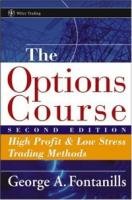
You've probably heard many opinions as to which option strategies are the best: Covered calls are best because they reduce the risk but still allow for a profit. Naked puts are the best because you're getting paid to buy stock. Straddles are the best because they allow you to make money whether the market is going up or down. If you've been trading options for a while, you no doubt have heard many others. But, when you hear comments such as these, all you're hearing are opinions of one trader's preference for a particular risk-reward profile. In order to really understand option trading, you need to understand that all option strategies come with their own sets of risks and rewards and the market will price them accordingly. Be careful of anyone telling you that a particular strategy is superior to another; they either do not fully understand options or are trying to sell you something.
New Trading Dimensions. Bill Williams

You are standing in the airport terminal of Your Life, and the jet plane departing for the 21st century is about to take off. You must make a choice: Do you remain in the terminal, eating the stale vending-machine food of outmoded thinking? Or do you get on the plane and soar into the stratosphere of trading computerization, swept along by the jet stream of evolving technology? Do you enjoy the in-flight snack of virtually unlimited information access, secure in the knowledge that when you encounter the inevitable turbulence of rapid market fluctuations, you are holding, in this book, the "automatic pilot" of expert advice and guidance? That is the vision of tomorrow that I am offering you. Let's explore together this amazing new cyberworld of science and trading. If you don't know about these latest advances in science and trading, have no fear. I'm not going to bombard you with technical gobbledygook.
Money Management. Balsara, J. Nauzer
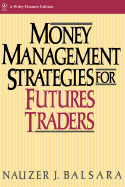
You also goes to Dave Lowdon of Logical Systems Inc. for programming support and to Mark Wiemeler and Ken McGahan for the charts presented in the book. Thanks are also due to graduate assistants Daniel Snyder and V. Anand for their untiring efforts. Special thanks are due to John Oleson for introducing me to chart-based risk and reward estimation techniques. My debt to these individuals parallels the enormous debt I owe to Dean Olga Engelhardt for encouraging me to write the book and Associate Dean Kathleen Carlson for providing valuable administrative support. My chairperson, Professor C. T. Chen, deserves special commendation for creating an environment conducive to thinking and writing. I also
wish to thank the Northeastern Illinois University Foundation for its generous support of my research endeavors.
Long-Term Secrets to Short-Term Trading. L. Williams
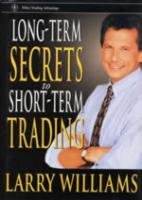
Whether you know it or not, you have been trading commodities all your life. Sure, you may have never traded a contract of Pork Bellies, but you have almost certainly traded a possession like a car, house, or antique for someone else's money or possession. If you have never done that, for sure you have traded time for money. You have traded your time as a teacher, lawyer, pipe fitter, or ditchdigger for someone else's money. So, you are halfway there. you just never knew it! When we trade our time, we are actually trading our time plus our skills. That is why a brain surgeon gets more per hour than a knee surgeon. That is also why an outstanding quarterback gets more than a tackle and surgeon combined. He has a greater career risk. It is not that one skill is inherently more valuable than the other, it is that one is more difficult to come by and carries higher risk.
Investments. Z.Bodie

Of necessity, our text has evolved along with the financial markets. In the Fifth Edition, we address many of the changes in the investment environment.
At the same time, many basic principles remain important. We believe that attention to these few important principles can simplify the study of otherwise difficult material and that fundamental principles should organize and motivate all study. These principles are crucial to understanding the securities already traded in financial markets and in understanding new securities that will be introduced in the future. For this reason, we have made this book thematic, meaning we never offer rules of thumb without reference to the central tenets of the modern approach to finance. The common theme unifying this book is that security markets are nearly efficient, meaning most securities are usually priced appropriately given their risk and return attributes.
Investment Performance Measurement. B. Feibel
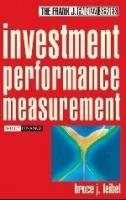
After we have set out the objectives for an investment, considered the challenges to reaching them, developed a strategy with the optimal chance of
meeting our goals, allocated assets to asset classes and managers, and purchased the securities to build our portfolios, the next step is to check the
results. Investment performance measurement is the quantification of the
results achieved by an investment program. This book describes and demonstrates the techniques we use to measure investment performance. Performance measures are statistics summarizing the rates of return achieved, estimates of the risk taken, and measures of the skill evidenced by the efficient use of risk. Once we have measured performance we are interested in measuring the contributions made by the securities, industries, asset classes, and other portfolio segments to the absolute and benchmark relative returns achieved.
Investment Fables. A. Damodaran
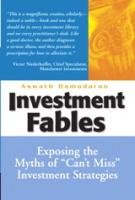
As investors, you have all been on the receiving end of sales pitches from brokers, friends and investment advisors about stocks that they claim will deliver spectacular returns. These stories not only sound persuasive and reasonable but are also backed up by evidence - anecdotal, in some cases, and statistical, in others - that the strategies work. When you try to implement them for your investments, though, you seldom can match their success on paper. All to often, you end up with buyer?s remorse, poorer for the experience and promising yourselves that you will not fall for the allure of these stories again. All too often, you forget the lessons of past mistakes and are easy prey for the next big stock story. While there are literally hundreds of schemes to beat the market in circulation, they are all variants of about a dozen basic themes that have been around for as long as there have been stocks to buy and sell.
- « первая
- ‹ предыдущая
- …
- 4
- 5
- 6
- 7
- 8
- 9
- 10
- 11
- 12
- …
- следующая ›
- последняя »

